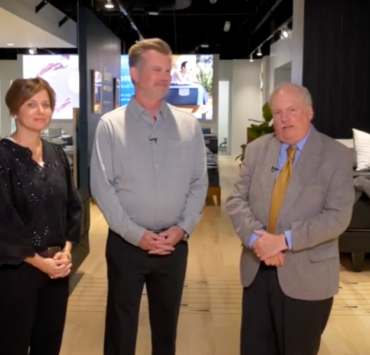In an age where digital noise is at an all-time high, capturing consumer attention has never been more challenging. But what if the differentiator you’re looking for is as old school as it gets — with a digital upgrade?
For mattress retailers, integrating a strategic sound identity into digital marketing can help create a memorable brand experience that resonates with customers and encourages engagement.
Sonic branding — and its psychological impact — can be a powerful tool in retail digital marketing, enhancing brand identity, driving engagement and increasing sales.
Understanding sonic branding
Sonic branding is the strategic use of sound to create a distinct and memorable brand identity. It goes beyond jingles and incorporates a range of audio elements, including sound logos, brand anthems and ambient sounds. Going beyond the bowl, Tostitos‘ 1.5-second sonic signature employs their iconic crunch, jar popping and even tuned lids.
For mattress and furniture retailers, sonic branding offers a unique way to stand out in a crowded digital landscape and create a deeper connection with customers.
According to a recent study in Psychology Today, our subconscious, emotional attraction to sounds is 86% correlated to our desire to engage with an experience — or completely avoid it. Studies have shown that certain sounds can evoke specific emotions, trigger memories and even influence purchasing decisions.
For instance, a soothing melody can create a sense of calm and trust, making customers more likely to engage with a brand. Conversely, an irritating sound can drive customers away, as in the case of 7/11’s use of classical music.
- Mercedes-Benz incorporated sonic branding in 2019, driving social media commenting up 300%.
- Spotify claims their audio-based programs result in a 90% increase in ad recall and 2.2X in brand awareness.
- Netflix or AT&T. Enough said.
A consistent audio identity — audio logos and branded music — across digital channels not only strengthens brand recognition but also creates a cohesive and immersive experience for customers, driving engagement and boosting sales.
So what’s driving a sound market?
As you begin think about using sound in your branding and marketing efforts, consider where your consumers spend their downtime — and how you can reach them there. More than a third of Americans listen to 8.3 podcast episodes weekly. It’s clear we’re listening while we’re working, exercising and driving.
- 38% of the U.S. population currently uses a smartwatch.
- 87B is the projected growth of smart appliances sold in the U.S. by 2027.
- 88% of TikTok users claim sound is essential to their experience.
- 73% of TikTok users claim they “stop and look” at ads with audio.
As we look ahead to a year that continues to be shaky at best, past consumer behavior patterns show that audio consumption increases during a recession.
Putting audio logos and sonic branding to work
To effectively implement sonic branding in retail, it’s essential to leverage various digital touchpoints. Website sound logos can greet visitors with a unique audio signature that reinforces brand identity the moment they land on the site.
Social media jingles can enhance video content, making it more engaging and memorable. Additionally, mobile app notifications with branded sounds can create a seamless and consistent user experience, reinforcing your brand every time a customer interacts with the app.
From incorporating sound logos on your telephone messaging to using branded music in social media content and websites, the possibilities are vast. But consistency is crucial. Pioneer Family Pools in Canada uses audio branding to mirror the personal, caring customer service that runs through their entire company.
Whether a customer is visiting one of their stores, browsing their website or engaging with social media content, they’ll encounter the same recognizable sounds.
Several furniture retailers have successfully implemented sonic branding with impressive results. Audio content at Tepperman’s, Living Spaces and Ashley HomeStores is instantly recognizable and used across all their marketing channels..
When integrated with consistency, sonic branding creates a powerful and lasting brand impression. Consider these potential entry points for audio logos and sonic branding:
- Telecommunications.
- In-app intro screens.
- Appliance boot-up announcements.
- TV commercials, presentations, videos.
- In-store music.
- Podcasts.
- Radio ads.
- Social audio.
Benefits and challenges of sonic branding
A well-crafted sound logo or jingle can encourage customers to spend more time interacting on your digital channels, but it comes with a cost. And there are challenges, too. Sounds can have different meanings and emotional impacts across cultures. Creating a universally appealing or appropriately localized sound logo requires professional sound design, consistent updates and integration across multiple channels.
But social media and digital advertising also have their challenges, costs and rewards. In a crowded digital marketplace, differentiation is key to standing out, and sonic branding offers a unique way to achieve this.
The future of retail branding lies in creating immersive, multisensory experiences that resonate deeply with consumers, and sound will play a crucial role in shaping these experiences.
As the retail landscape continues to evolve, those who embrace innovative branding strategies like sonic branding will be well positioned for success.




